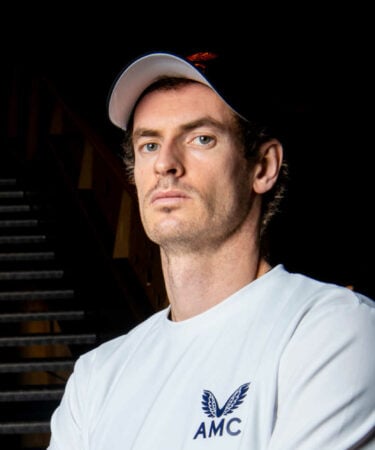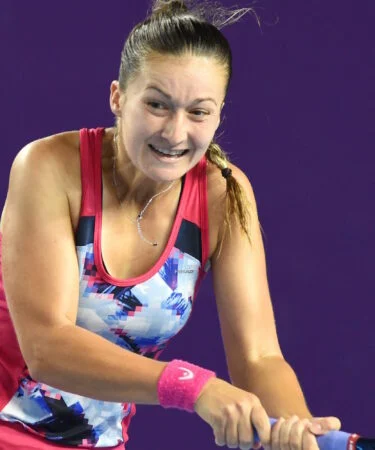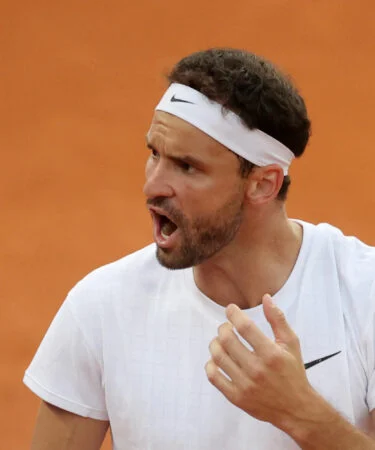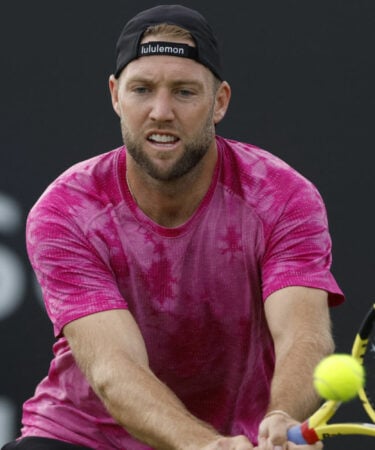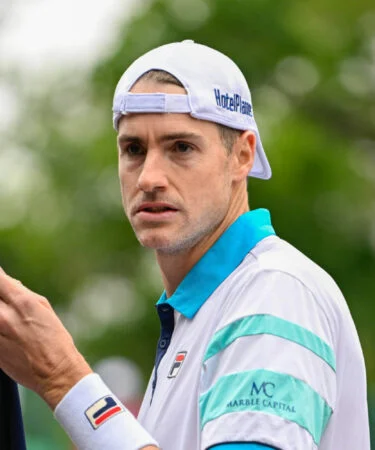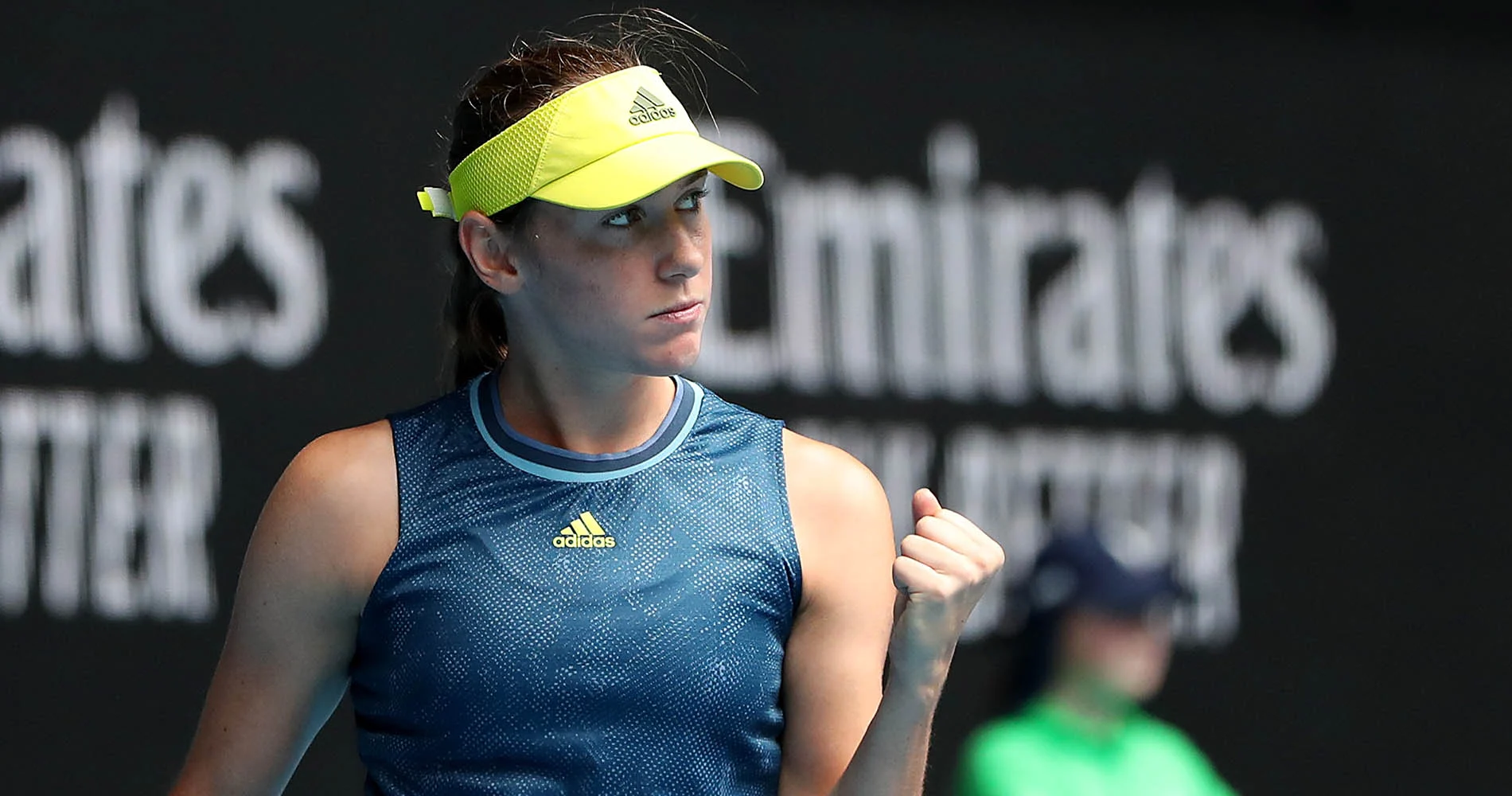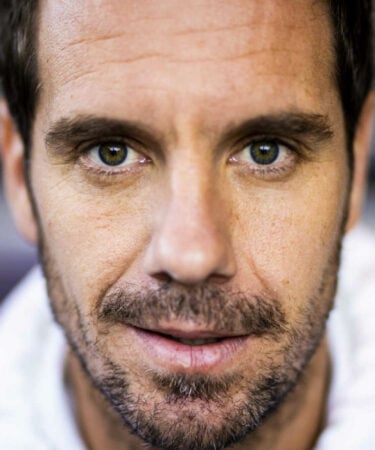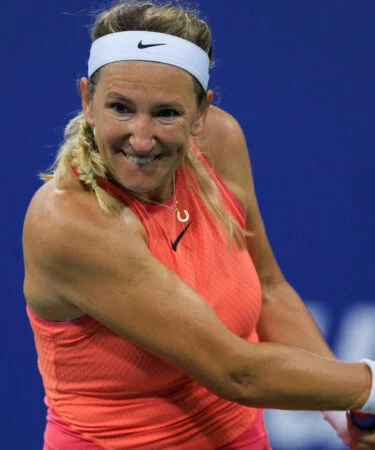20 memorable scenes of extreme fatigue on a tennis court
Taylor Fritz’s vomiting incident last weekend in Acapulco was a reminder of many other scenes of suffering where players have gone to the limit to finish a match, sometimes even victoriously. Here are 20 of the most dramatic and memorable similar incidents.
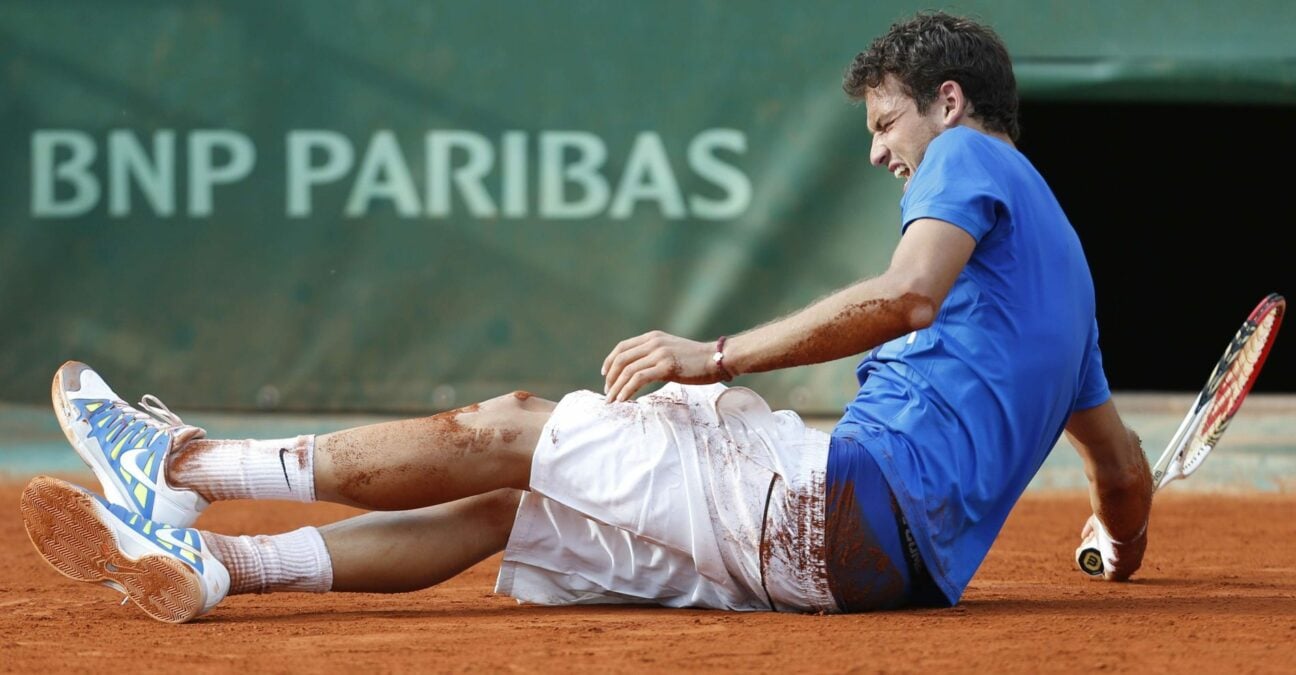 © Bernat Armangue/AP/SIPA
© Bernat Armangue/AP/SIPA

Michael Chang, Roland-Garros 1989
One of the most dramatic and iconic matches in history was 17-year-old Michael Chang’s match against world No 1 Ivan Lendl in the last 16 of the 1989 French Open.
Down two sets to love, the diminutive American rallied but by the fifth set was struggling badly with cramping.
He could no longer sit down at the changes of ends, thought about giving up, but used his faith and guile to finally find a way out, thanks in particular to a campaign of “moonballs” that gave him time to reposition himself, not forgetting that famous underarm serve that has gone down in history.
Chang finally broke Lendl’s nerve, won and a few days later became the youngest men’s Grand Slam winner in history.
Perhaps the most famous, if not the most applauded, abandonment in history. Michael Chang was still on stage, but on the other side: the dramatic role this time fell to his “old” compatriot Jimmy Connors, who at 38 years of age was playing in his penultimate French Open, and whom he faced in the third round.
Against the man who was now one of the favourites for the tournament, “Jimbo”, who was down two sets to one, fought like hell to come back to two sets all. But he was at the end of his rope. He only had one point left, which he takes care to win with a backhand return in the fifth set. He was satisfied with his lead when he told the referee, Bruno Rebeuh, that he had to give up.
The referee tried to convince him but Connors couldn’t take it any more: “Believe me, if I tell you I can’t play any more, it’s because I can’t”. You have to believe him: exhausted, dehydrated, he will end up on IVs in the locker room.
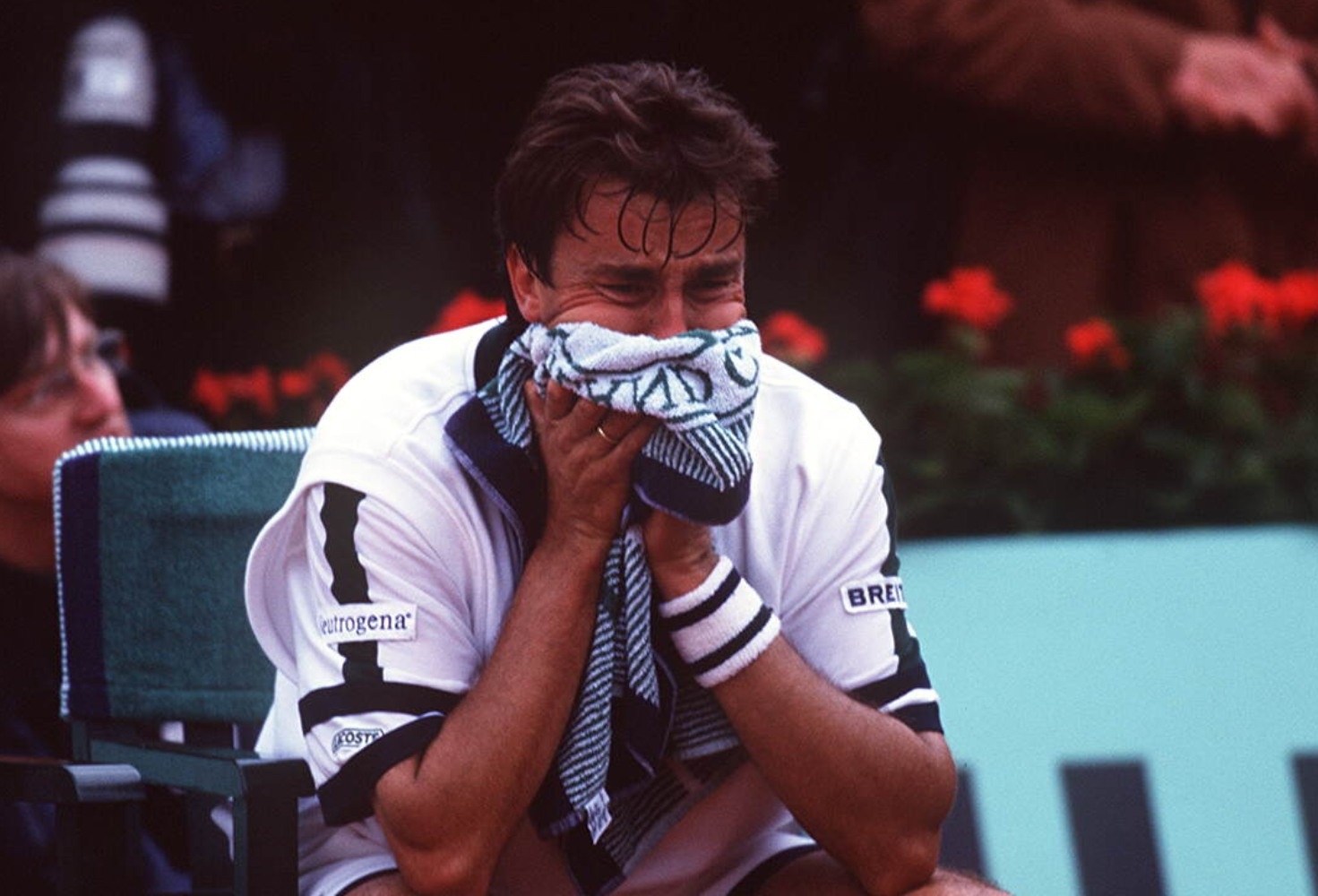
Henri Leconte, Australian Open 1994
Henri Leconte never made it past two rounds at the Australian Open, where he found it difficult to endure the particularly hot weather. He could not bear to play with a cap on, but was forced to do so in the second round of the 1994 event against the Czech Martin Damm.
That day, the temperature was not infernal (24 degrees) and the Frenchman played well to take a set and a break lead. But he gradually began to feel unwell, let his opponent come back. Then a frightening scene occurred: down 4-2 in the 4th set, Henri, after missing his first serve, collapsed on the Australian Rebound Ace, before being taken by convulsions.
Victim of sunstroke, he was evacuated on a stretcher.
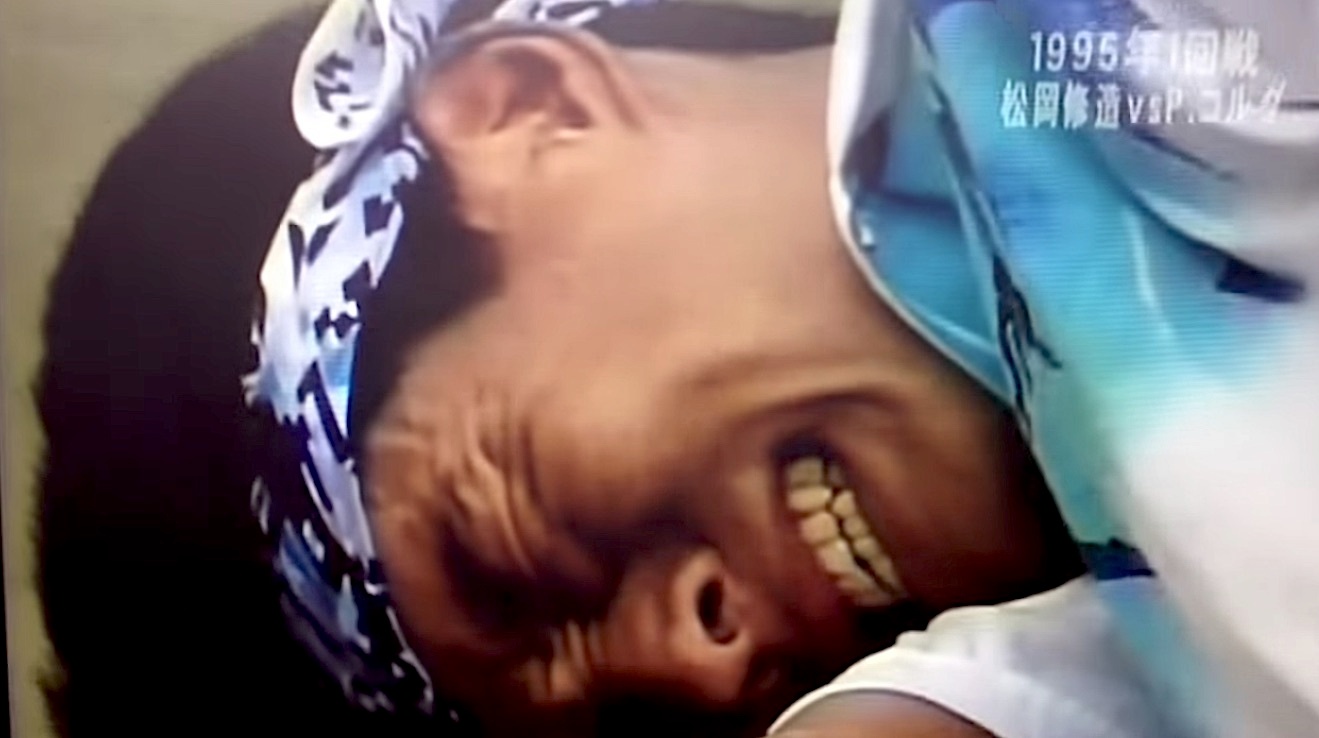
Shuzo Matsuoka, US Open 1995
It is one of the most dramatic scenes ever seen, and probably the most famous one too, considering the consequences it would have on the regulation of cramps.
In the first round of the 1995 US Open, Shuzo Matsuoka of Japan, who had just reached the quarter-finals at Wimbledon, was on the verge of another great performance when he led Petr Korda by two sets to one (6-7, 7-6, 7-6, 5-5).
The two men had been battling it out for 3 hours and 26 minutes in the sweltering heat of New York when, having just hit a forehand winner, Matsuoka collapsed to the ground screaming, the victim of a sudden and excruciating cramp attack.
The rules at the time did not allow a player to receive medical treatment for cramps, so the player was left in agony for three minutes, counted as a groggy boxer before being declared beaten.
Matsuoka was very fair and did not question the rules, which were changed after this episode… only to be reversed in 2008. Today, it’s the same thing: cramps are not considered an injury but a loss of physical condition, and are therefore not a valid reason for a medical timeout (although they can of course be treated within the time limit of a change of ends).
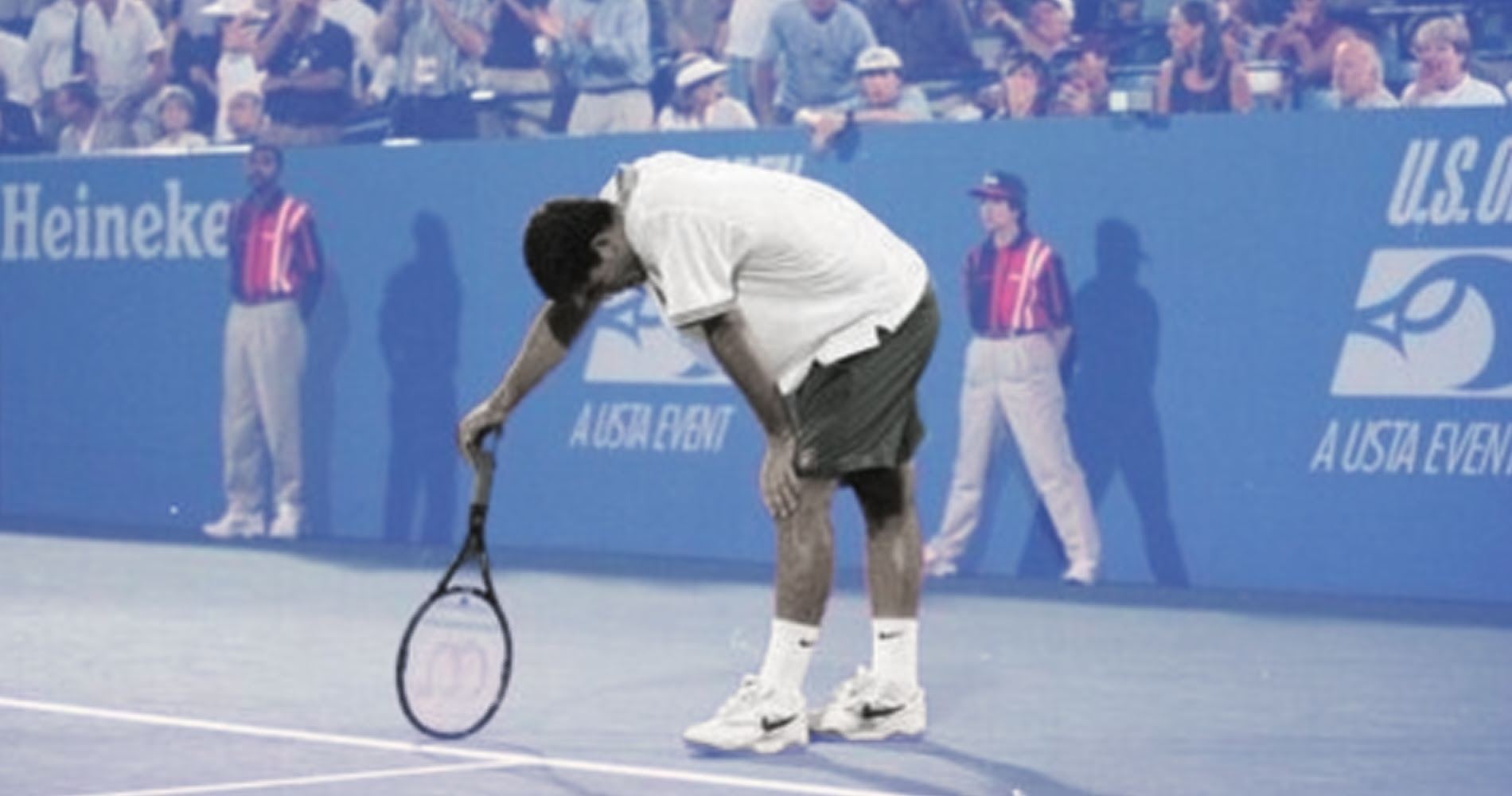
Pete Sampras, US Open 1996
Suffering from thalassemia, a genetic defect in the synthesis of haemoglobin that caused him to suffer from temporary bouts of fatigue, Pete Sampras often played heroic matches in which he had to go to the limit of his abilities. But never more so than in the quarter-final of the 1996 US Open, where he miraculously came through against Alex Corretja, defeated 7-6, 5-7, 5-7, 6-4, 7-6 after a marathon match of more than 4 hours..
Showing signs of weakness in the fourth set, the American relied on his serve and forehand to stay alive, while staggering between points. At 1-1 in the final set, he couldn’t take it anymore: he turned to the tarp and started vomiting on the court, taking a cruel but logical penalty point, which earned the umpire a huge roar from the crowd.
Sampras eventually pulled through after saving a match point at 7-6 and would explain that he held on thanks to the memory of his coach Tim Gullikson, who had died during the year. He needed two litres of intravenous fluids to recover before lifting the trophy a few days later.
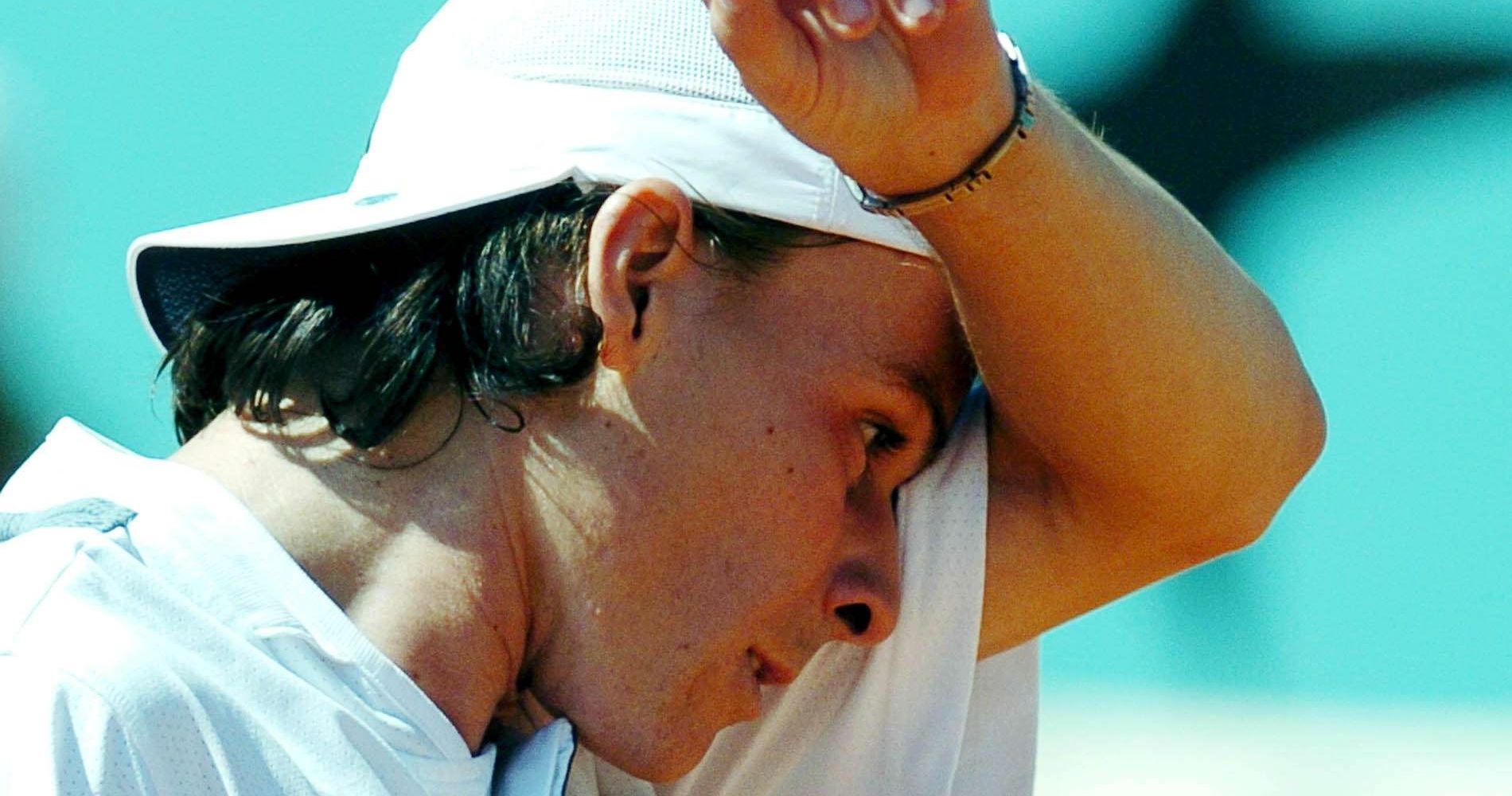
Guillermo Coria, Roland-Garros 2004
To convince oneself that cramps can also be psychosomatic, one only has to replay the all-Argentine 2004 French Open final between Gaston Gaudio and Guillermo Coria, finally won by the former 0-6, 3-6, 6-4, 6-1, 8-6 after the latter’s characteristic refusal to accept the obstacle.
Coria was the favourite to win the match against his arch-rival, but as Gaudio began to break free, he gradually began to fade. Cramping, he openly threw away the fourth set while waiting for the medical treatment to take effect.
Coria hung in at the start of the fifth set but in the final part of a mindless final set, peppered with breaks and crazy exchanges, he was unable to serve, or to close out two match points at 6-5. And it was Gaudio who finally won in the end, having remained more solid on his legs, and in his head.
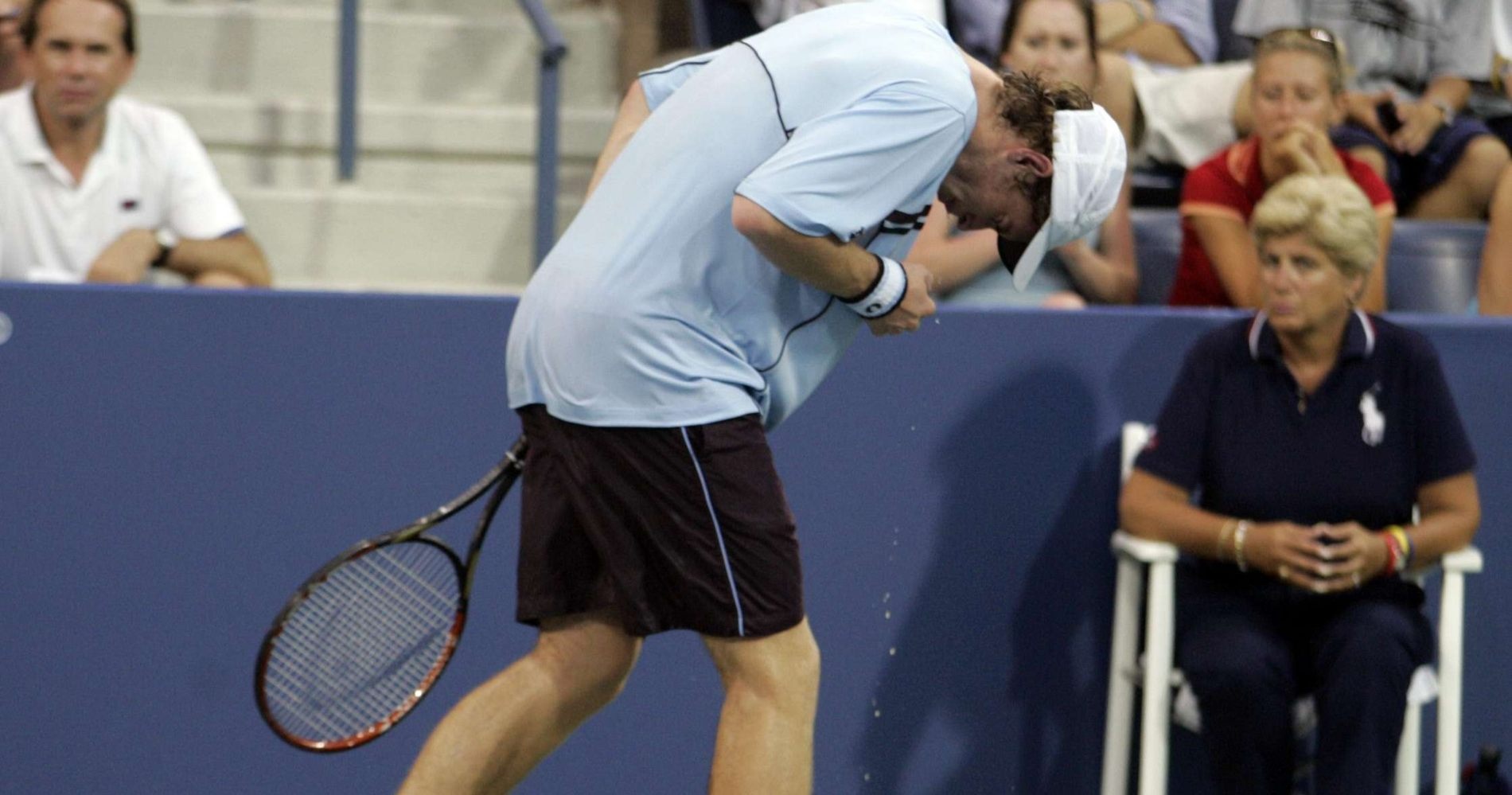
Andy Murray, US Open 2005
In the series: “I give everything on the court and sometimes even the contents of my stomach”, we also remember this offering from Andy Murray at the US Open in 2005, nine years after Pete Sampras’ incident.
At the time, the 18-year-old Scot was already the warrior we know, but he didn’t have the same physical strength. At Wimbledon, where he had just reached the third round, he suffered a severe cramp attack that cost him a match he had in hand against David Nalbandian.
This time in the first round of the US Open against Romanian Andrei Pavel, Murray had the break in the fifth set (2-1) when he vomited on the court. The match was interrupted for more than 20 minutes, the time it took to clean up the mess, which perhaps also allowed the future world No 1 to regain his strength and finally win 6-3, 3-6, 3-6, 6-1, 6-4.
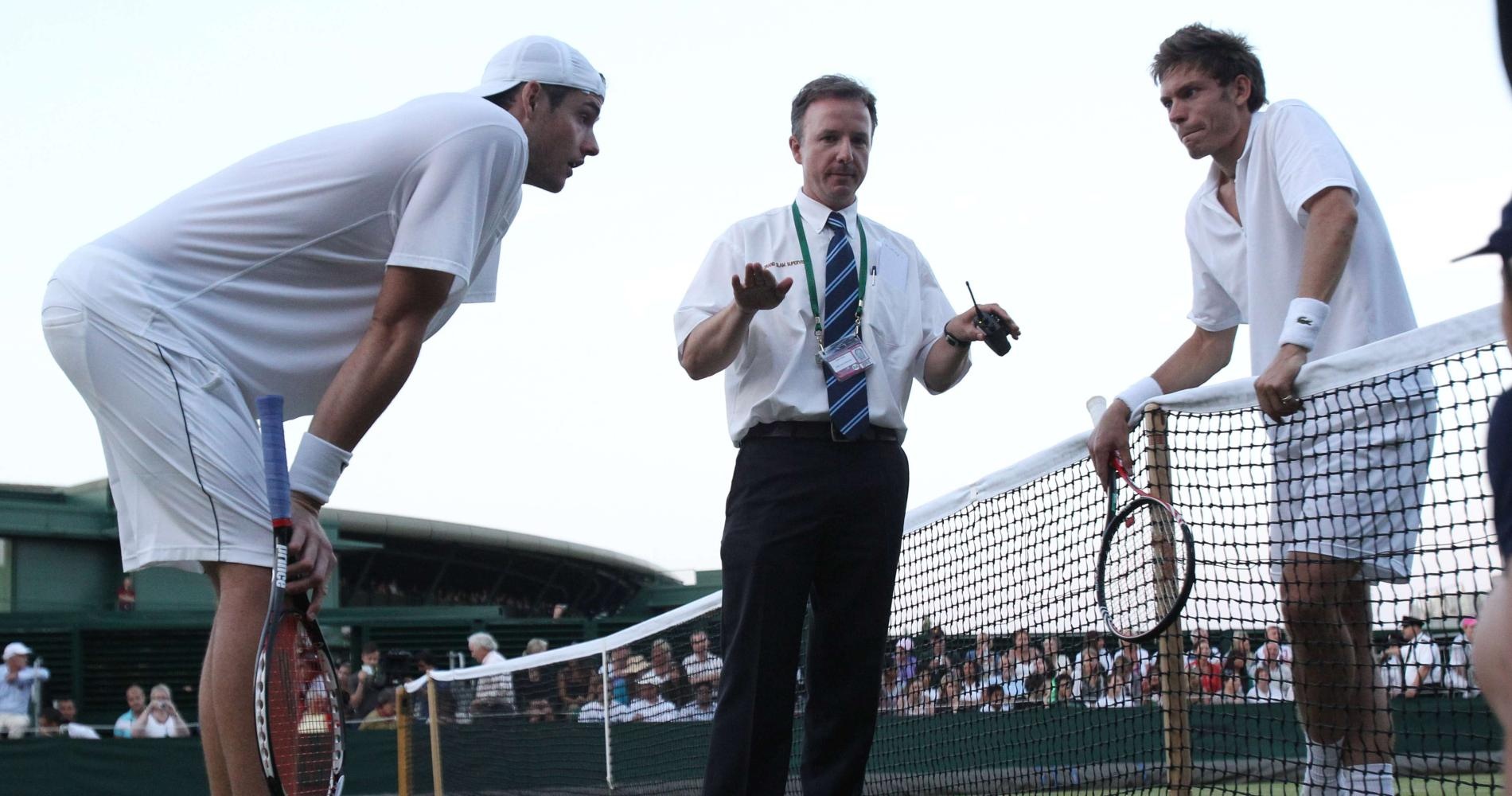
John Isner and Nicolas Mahut, Wimbledon 2010
The match that will remain forever – it can be said – the longest in the history of tennis (11 hours, 5 minutes over three days) and the one that probably also embodies more than any other the idea of going to the end of oneself.
Paradoxically, John Isner and Nicolas Mahut did not show any outward signs of fatigue on the court. Right to the end they remained dignified, including during the joint interview conducted on the court after their match, finally won 70-68 in the fifth set by the American.
Rather, it was after the match that they both collapsed, with the Frenchman in particular feeling unwell in the All England Club dressing room. “He was groggy for a few minutes, haggard, not knowing where he lived or what his name was. He had lost a few notions,” said his friend and compatriot Julien Benneteau.
Is it humanly possible to push the physical resistance barrier any further?
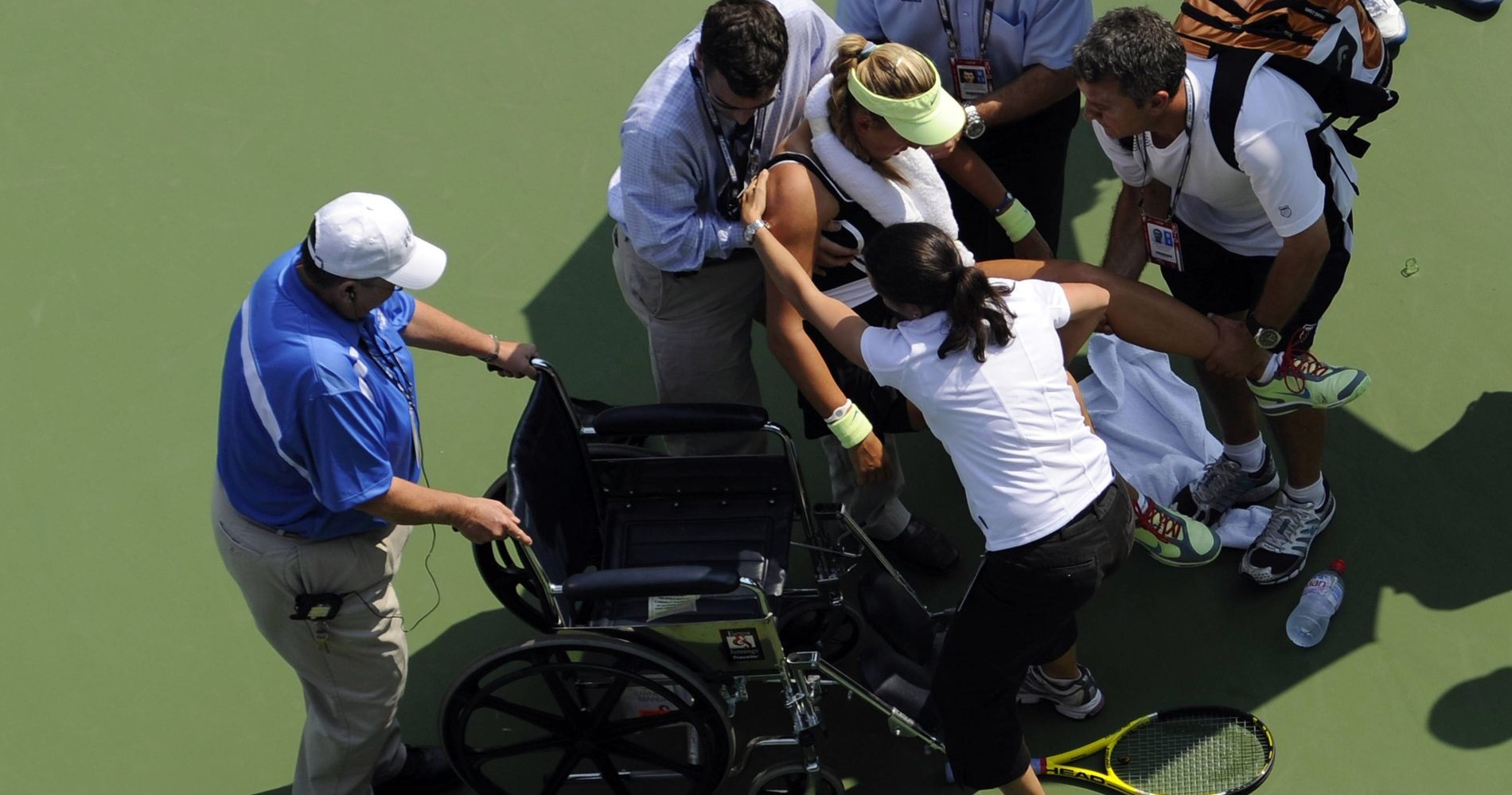
Victoria Azarenka, US Open 2010
US Open again, women’s draw this time. Victoria Azarenka, 21, was already firmly established among the world’s best but remained physically fragile, like the mysterious virus that led her to retire against Serena Williams in the round of 16 at the Australian Open a year earlier.
This time, she faced Argentina’s Gisela Dulko in the second round of the US Open on a very hot day. The Belarusian, who lives in the Arizona desert, couldn’t cope. She was completely out of her depth, even to the point of making an air-shot on her serve. At 3-0, she called the doctor who examined her and she decided to go back to battle.
But when she was down 5-1 on her serve, Vika couldn’t take it anymore. After another lost point, she collapsed on the court and never got up again. She was evacuated on a stretcher and will end her day in hospital.

Richard Gasquet and Grigor Dimitrov,
Roland-Garros 2012
An absolutely ubiquitous scene, both terrible and a little tragicomic, was offered to us in 2012 on the Suzanne-Lenglen court at Roland-Garros by Richard Gasquet and Grigor Dimitrov, who were pitted against each other in the second round, a clash between two players who are much more renowned (perhaps wrongly) for their extraordinary talent than for their physical strength.
The battle raged on between these two aesthetes and reached its climax at the end of the second set when the Bulgarian served at 5-4 to lead two sets to love. A break point in favour of the Frenchman led to a phenomenal exchange of 36 strokes that ended up with both men on the floor, forcing Gasquet to swallow his banana on the court and Dimitrov to be suddenly cut down by cramps.
“Richie” got up quickly but the Bulgarian crawled like a wounded soldier to the linesman’s chair. He went back into action, but considerably diminished, until an inevitable defeat 5-7, 7-5, 6-2, 6-3.
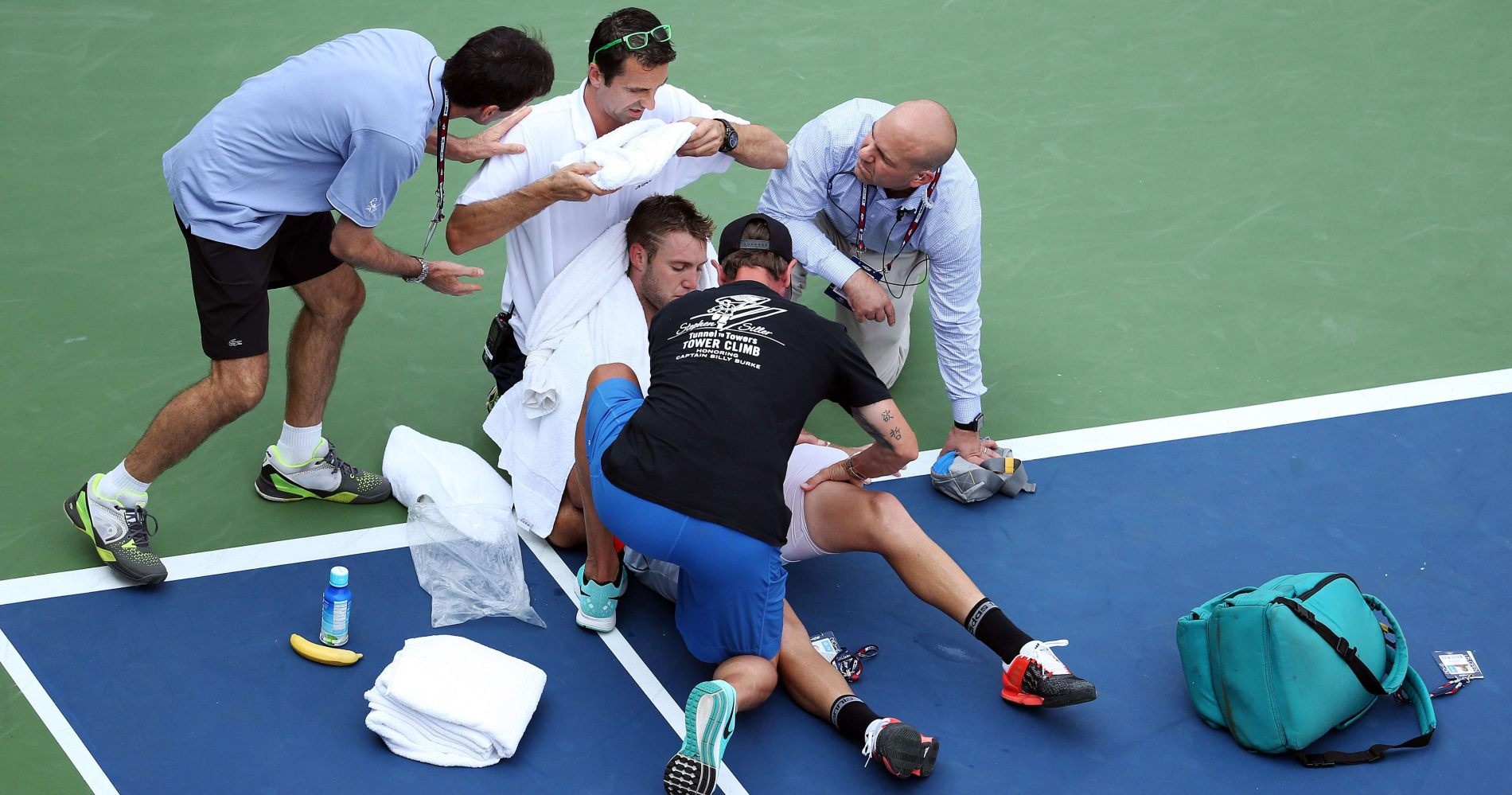
Jack Sock, US Open 2015
Another episode of the damage caused by the muggy heat at the US Open. That year, 2015, it was particularly hot, close to 35 degrees, in a tournament that had already caused a record number of withdrawals, including those of Thanasi Kokkinakis against Richard Gasquet and Marina Erakovic against Simona Halep, victims of cramps and dehydration.
Jack Sock’s was even more impressive as the American was leading two sets to one in the second round against Ruben Belmelmans when, serving at 1-2 in the fourth set, he suddenly held back, started walking as if he was drunk and then collapsed, never to get up again. After a few minutes of treatment, he had to throw out before being taken back to the dressing room, supported by two physiotherapists (6-4, 6-4, 3-6, 1-2). This was the 13th withdrawal of the tournament.
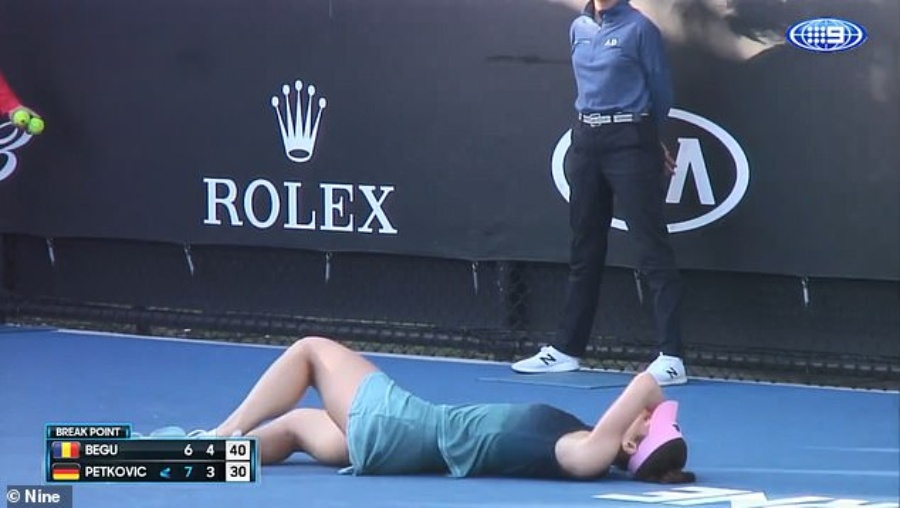
Andrea Petkovic, Australian Open 2019
The Australian Open is another tournament where the heat is overwhelming and the effort is extreme. Andrea Petkovic experienced a frightening scene there in the first round of the 2019 edition, in the middle of a big fight against Romanian Irina-Camelia Begu.
The 31-year-old German, whose preparation for the tournament had been disrupted by the flu, won the first set 7-6 when she began to falter in the second. She clung on as best she could to the prospect of victory when, suddenly, it was too much: after losing a point at 4-3, 30-30 in the second set, Petkovic knelt on the court before collapsing on her back, as if convulsing.
After several minutes of treatment, she was never able to resume the match, leaving the court haggard and disoriented.
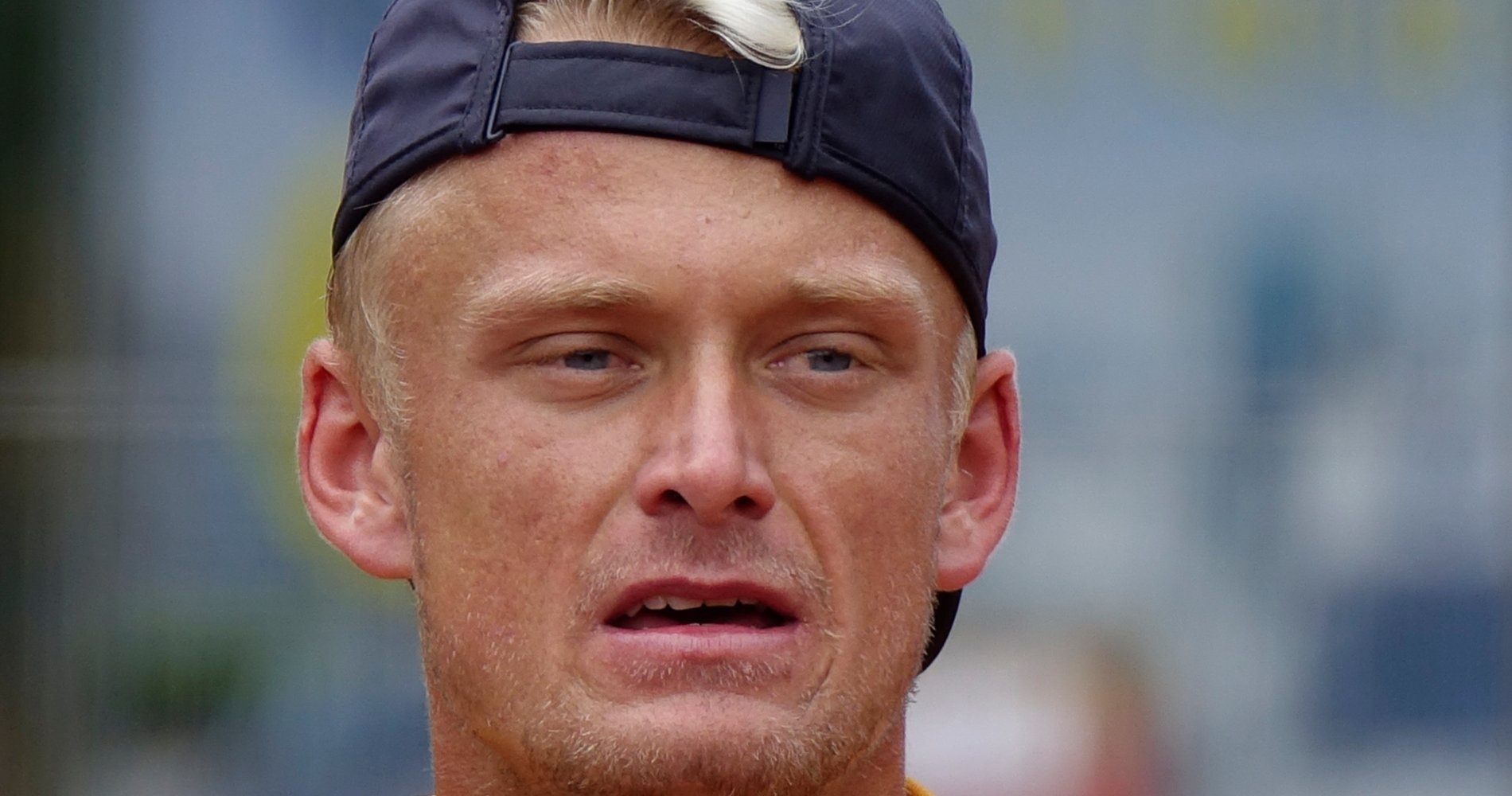
Nicola Kuhn, Miami 2019
On the day he turned 19, Spain’s Nicola Kuhn, then a top tour hopeful, had probably the most traumatic experience of his career on a tennis court. Not only did he miss eight match points to advance to the second round of the Miami Masters 1000 against Mischa Zverev, but he suffered a sudden and spectacular collapse at the start of the third set, while the fight was still raging.
Kuhn, who had break point at the start of the third set, was forced to save a break point when he collapsed in the middle of a rally while playing a seemingly innocuous shot. The young Iberian suffered terrible cramps and fell forward, fortunately without hitting his head, and had to give up in tears many minutes later. After leading 6-2, 5-2, he lost 2-6, 7-5, 2-2. And he still hasn’t won a match in the Masters 1000.

Dalila Jakupovic,Australian Open 2020
The 2020 Australian Open was a special Grand Slam, not only because it was the last one before the Covid, but also because it was played in conditions made extreme by the forest fires that raged close to Melbourne that year.
The qualifiers were nevertheless held amidst some controversy, which escalated after Slovenia’s Dalila Jakupovic suffered a coughing fit and breathing difficulties to the point where she was forced to retire in spectacular fashion in her first round against Stefanie Voegele.
It was all the more difficult to accept because Jakupovic had won the first set and had just scored a point to make it 6-6 in the second when she collapsed. She explained afterwards that she had never suffered from asthma or any associated allergy problems.

Kiki Bertens, Roland-Garros 2020
Roland Garros 2020, one of the craziest matches in one of the most unusual editions, postponed to the autumn due to the coronavirus pandemic. Kiki Bertens finally beat Sara Errani 7-6, 3-6, 9-7 in 3 hours and 11 minutes, after a match and especially a third set full of breaks, during which the former finalist of the tournament (2012) could no longer serve while the Dutchwoman could no longer move, suffering from leg and arm cramps. She even broke down in tears at a side change at 5-4, as the Italian was about to serve for the match.
But the Italian was unable to finish her off and Bertens eventually broke and lay down on the ground, drunk with exhaustion and joy. She finally found the strength to get up and slump down in her chair, still crying and screaming in pain. She was finally evacuated from court 14 on a wheelchair, while her opponent, convinced that she was faking, left the same court without shaking her hand, muttering obscenities that we will not transcribe here.

Jack Draper, Miami 2021
Miami again, another young teenager in the heat of the Florida humidity. Britain’s Jack Draper was in the midst of a bitter battle with the experienced Mikhail Kukushkin in the first round. The first set had been going on for more than an hour and 15 minutes when Draper, suffering from a serious slump, called the doctor during a side change at 6-5, during which he was examined.
He resumed bravely but, while facing a set point on his serve in the next game, he suddenly collapsed on a backhand at the end of the court. The medical staff rushed to his bedside and found him prostrate. He struggles to get up after a few minutes but he has just lost the set and, of course, the match.
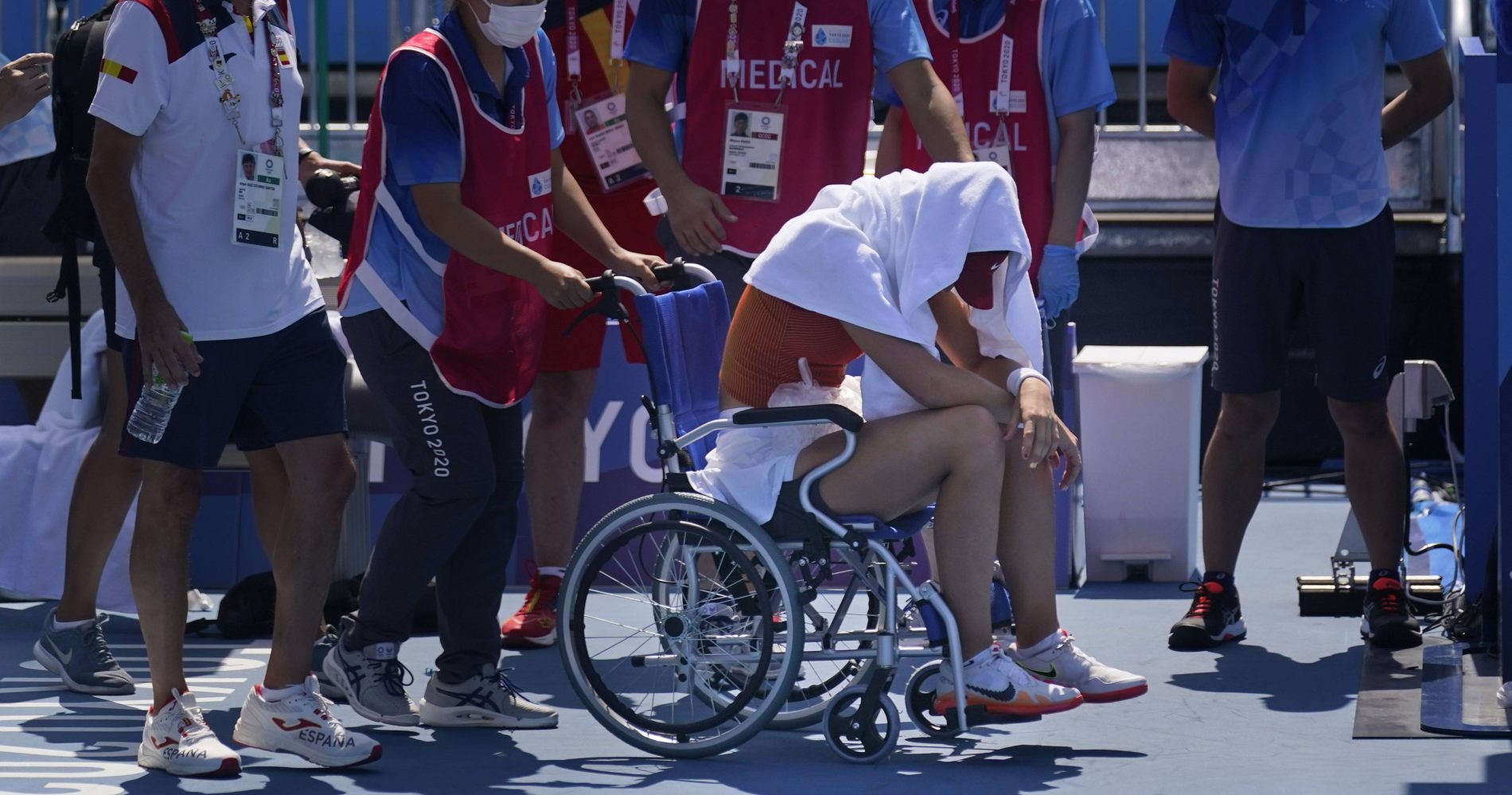
Paula Badosa, Olympic Games 2021
The tennis event at the 2021 Tokyo Olympic Games took place in particularly suffocating weather conditions linked to heat and pollution, to the point where the players were finally getting fed up.
Daniil Medvedev was the first notable victim of a heat stroke in his round of 16 match against Fabio Fognini, but he did not escape without warning the authorities: “I can continue the match but if I die, who will be responsible?
Fortunately, it did not come to that, but on the same day, Paula Badosa had a scare when she collapsed on the court after losing the first set (6-3) of her quarter-final against Marketa Vondrousova. The Spaniard was never able to resume the match and had to leave the Games in tears.
After this incident, the International Federation finally adapted the schedule by starting the matches a little later (3pm instead of 11am).

Kaja Juvan, Australian Open 2021
Another Australian Open, another Slovenian: Kaja Juvan qualified for the third round with a gutsy victory over Egyptian Mayar Sherif.
After fighting back to tie the match at one set apiece, 20-year-old Juvan was nauseated throughout the third set, vomiting on the floor next to her chair after the first game, then throwing up again, this time into a bin, after securing her victory 3-6, 7-6, 6-3 in 2 hours and 39 minutes. It was well worth kneeling face down on the ground.

Stefan Kozlov Acapulco 2022
The American Stefan Kozlov will remember his victory over Grigor Dimitrov in the first round of the 2022 Acapulco tournament for the rest of his life. Not only because it was the best of his career, but also because it was the longest match of the Mexican tournament (3h21) and one of the most epic, too.
Kozlov could have made it shorter because he had just broken in the second set, after winning the first, when his body suddenly became engulfed by a huge cramp, forcing him to lie down on the court. Dimitrov, the knight in shining armour, came to his side with the medical staff and it could be said, with some cynicism, that he may have regretted it: after losing the second set and then leaving the court in a wheelchair for treatment before the third, Kozlov recovered to win 7-6, 5-7, 6-3.
We would later learn that Kozlov, already a lucky loser in this tournament, had been stranded at sea for 20 minutes after his jet-ski broke down on the morning of the match!

Taylor Fritz, Acapulco 2023
There must be a lot going on behind the scenes in Acapulco to produce such epic matches: one year after Kozlov-Dimitrov, Americans Taylor Fritz and Tommy Paul broke the record for the longest match of the tournament (3 hours, 27 minutes) at the end of a match in which the former suffered a bout of vomiting due to the extreme humidity that led to his dehydration.
Serving to stay in the match at 6-5 against him in the third set, Fritz, suddenly feeling nauseous, then walked to his chair, next to which the referee pointed to a bin to vomit into. Fritz calmly did so, returned to serve, won his service game and saved a match point, before finally losing 6-3, 6-7, 7-6.








